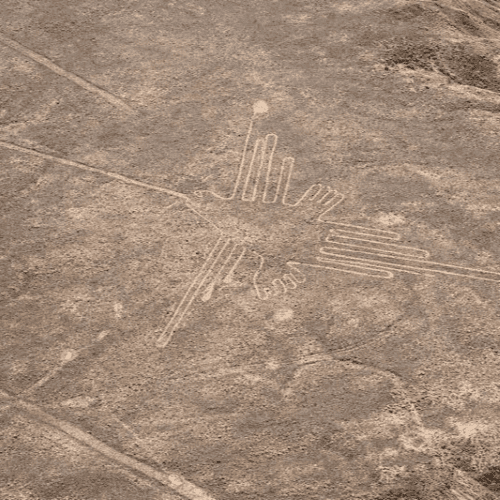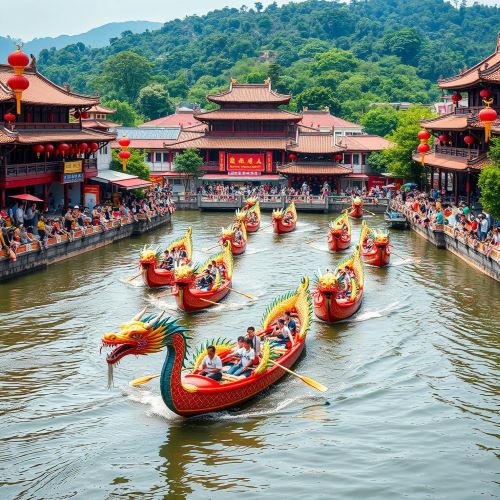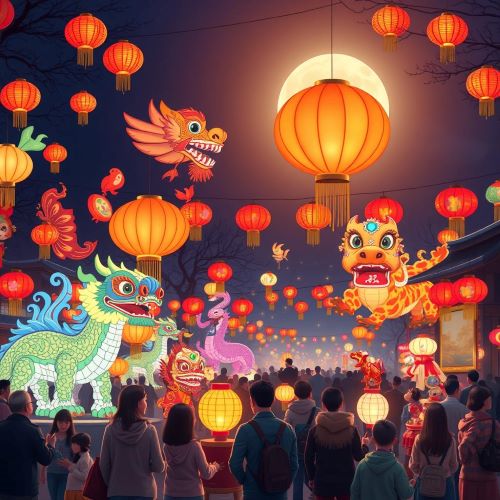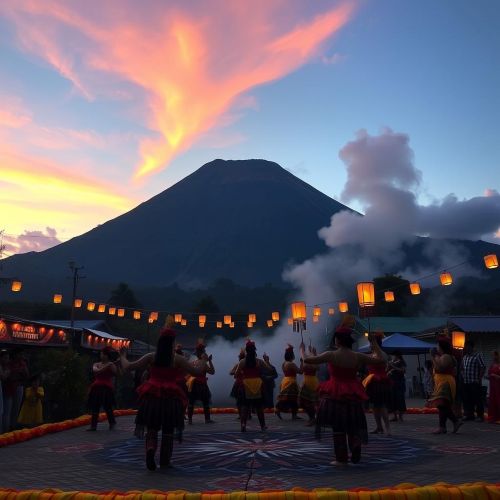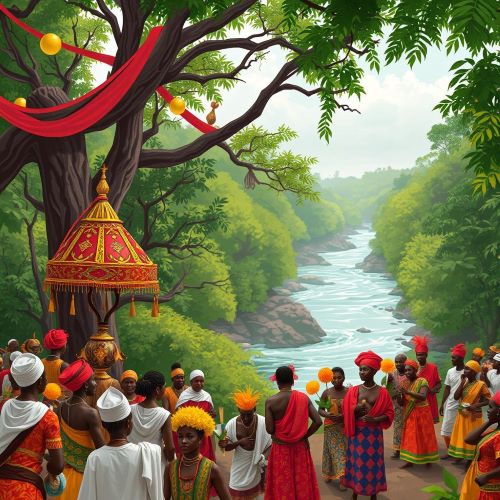Holi : Festival of Colours
At a glance
| Description | |
|---|---|
| Location | North India |
| Country | India |
| Dedicated To | Krishna, Holika |
| Duration | 2 days |
| Time of Year | March |
Introduction
Holi, often called the “Festival of Colors,” is one of India’s most cherished celebrations, known for its infectious energy, vibrant hues, and cultural depth. Observed each spring, it marks not just the change in season, but also a time of renewal, togetherness, and joy. Streets fill with people covered in colored powders, music echoes through neighborhoods, and the air smells of sweets and spiced drinks. But behind the dazzling spectacle lies a celebration rich with tradition, mythological significance, and universal values that resonate across generations.
Connection with Mythology
The spiritual essence of Holi can be traced back to several ancient tales from Hindu mythology. One of the most profound stories involves Prahlad, a young prince devoted to Lord Vishnu, who defied the demands of his tyrannical father, the demon king Hiranyakashipu. To punish him, Hiranyakashipu enlisted his sister Holika, who had a magical garment that protected her from fire. They plotted to burn Prahlad alive, but divine intervention turned the tables—Holika was consumed by the flames while Prahlad emerged unscathed. This event symbolizes the ultimate victory of faith and virtue over arrogance and evil.
Equally beloved is the legend of Krishna and Radha, which gives Holi its playful and romantic character. Krishna, dark-skinned and mischievous, was worried Radha might not love him due to his complexion. His mother suggested he color Radha’s face, which he did with glee—creating the basis for today’s joyful throwing of colors. Their story underscores themes of love, equality, and acceptance that continue to define Holi’s spirit.
Other lesser-known stories, such as the burning of desire personified as Kamadeva and the divine play of Krishna defeating evil forces even as an infant, further add layers of meaning to this multifaceted festival. These stories illustrate renewal, the cyclical defeat of negativity, and the affirmation of life’s beauty.
Main Activities
Holi isn’t just about color—it’s a multi-day celebration with rituals and customs that vary across India. The festivities usually begin with Holika Dahan, a ceremonial bonfire held on the eve of Holi. Communities gather as night falls to light these fires, offering grains, coconuts, and prayers. The flames are symbolic, purging negativity and marking a fresh start.
The next day—known as Rangwali Holi—is an explosion of joy. Children and adults take to the streets armed with gulal (colored powders), pichkaris (water guns), and even water balloons. No one is spared in this playful chaos, where strangers become friends with a splash of pink, blue, or yellow. Traditional drums and songs set the rhythm, as dancing spontaneously breaks out in neighborhoods and public squares.
Food is another key element of the celebration. Households prepare delicacies such as gujiya, dahi bhalla, and malpua, while thandai—a creamy drink often laced with mild cannabis—is served to add to the merriment. The festival’s warmth lies not just in its rituals, but in the heartfelt hospitality and shared laughter that accompany them.
In regions like Mathura, Vrindavan, and Barsana—places closely associated with Krishna—Holi takes on an even grander scale. From flower-throwing ceremonies to Lathmar Holi, where women playfully chase men with sticks, local traditions infuse the festival with regional flavor and storytelling.
Importance in Cultural History
What makes Holi stand out is its power to unite. Unlike other celebrations that might be confined to specific groups or regions, Holi breaks down barriers. On this day, social hierarchies momentarily dissolve. People of different castes, ages, genders, and backgrounds join together in celebration, a symbolic reminder of the values of equality and community.
Historically, Holi has always been more than just a festival. Ancient scriptures like the Puranas and even works by classical poets such as Kalidasa reference Holi in various forms. It also had a place in royal courts during the Mughal era—emperors like Akbar and Jahangir reportedly partook in Holi festivities, blending Persian and Indian cultures in elaborate spring gatherings.
Agriculturally, Holi marks the end of winter and the beginning of the harvest season. In this sense, it is not just about colors, but about gratitude for abundance and hope for the coming year. The celebration is deeply tied to nature’s cycles, emphasizing the importance of harmony between humans and the environment.
International Appeal
Today, Holi has transcended geographic boundaries. Thanks to the Indian diaspora and growing global curiosity about South Asian cultures, the festival is now celebrated in countries far from its origin. Major cities like New York, London, Toronto, and Sydney host public Holi events that draw thousands of attendees from all walks of life. These gatherings may include music festivals, food stalls, yoga sessions, and, of course, lots of color.
The global spread of Holi has also inspired modern reinterpretations. Color-themed marathons like “The Color Run” and Holi-inspired music festivals have popped up in various parts of the world. While these events often capture the joy and visual appeal of the festival, they sometimes miss the deeper cultural and spiritual undertones. It’s important that as Holi grows internationally, it’s celebrated with awareness and respect for its roots.
Thankfully, many organizations and communities abroad have taken steps to educate participants about the mythology and traditions of Holi. In recent years, there’s also been a growing shift toward eco-friendly Holi, with people opting for organic, plant-based colors to reduce environmental impact and promote safe play.
Source
Holi: Origins, Mythology & Traditions | HISTORY. (2024). https://www.history.com/topics/asian-history/holi
Mahima Sharma. (2024). Holi: History and Significance of Holi festival – Times of India. https://timesofindia.indiatimes.com/religion/hindu-mythology/holi-history-and-significance-of-holi-festival/articleshow/108711431.cms
Holi: Festival of Colors | Britannica. (2025). https://www.britannica.com/story/holi-festival-of-colors
Contributors to Wikimedia projects. (2004). Holi – Wikipedia. https://en.wikipedia.org/wiki/Holi
TOI-Online. (2023). 5 Fascinating Legends Behind The Occasion of Holi and Holika … https://timesofindia.indiatimes.com/religion/festivals/history-of-holi-5-fascinating-legends-behind-holi-and-holika-dahan/articleshow/98439636.cms
Frequently Asked Questions
Lorem ipsum dolor sit amet, consectetur adipiscing?
Lorem ipsum dolor sit amet, consectetur adipiscing elit. Praesent convallis vestibulum justo, ac tincidunt nunc vehicula quis. Nullam id dolor quis orci malesuada feugiat. Curabitur aliquet libero at urna ullamcorper, ac ultricies nulla dapibus.
Lorem ipsum dolor sit amet, consectetur adipiscing?
Lorem ipsum dolor sit amet, consectetur adipiscing elit. Praesent convallis vestibulum justo, ac tincidunt nunc vehicula quis. Nullam id dolor quis orci malesuada feugiat. Curabitur aliquet libero at urna ullamcorper, ac ultricies nulla dapibus.
Lorem ipsum dolor sit amet, consectetur adipiscing?
Lorem ipsum dolor sit amet, consectetur adipiscing elit. Praesent convallis vestibulum justo, ac tincidunt nunc vehicula quis. Nullam id dolor quis orci malesuada feugiat. Curabitur aliquet libero at urna ullamcorper, ac ultricies nulla dapibus.
Lorem ipsum dolor sit amet, consectetur adipiscing?
Lorem ipsum dolor sit amet, consectetur adipiscing elit. Praesent convallis vestibulum justo, ac tincidunt nunc vehicula quis. Nullam id dolor quis orci malesuada feugiat. Curabitur aliquet libero at urna ullamcorper, ac ultricies nulla dapibus.
Lorem ipsum dolor sit amet, consectetur adipiscing?
Lorem ipsum dolor sit amet, consectetur adipiscing elit. Praesent convallis vestibulum justo, ac tincidunt nunc vehicula quis. Nullam id dolor quis orci malesuada feugiat. Curabitur aliquet libero at urna ullamcorper, ac ultricies nulla dapibus.



